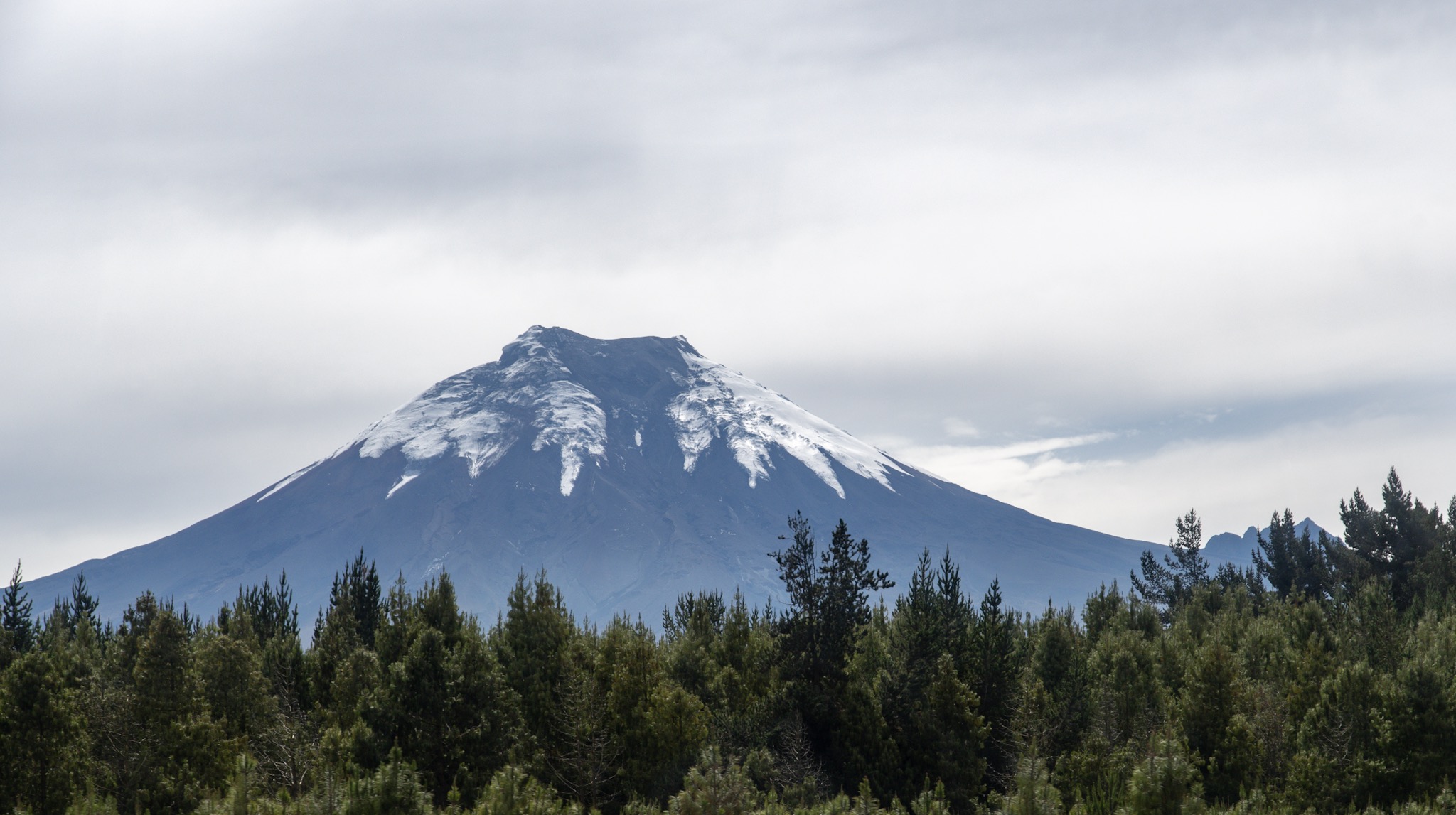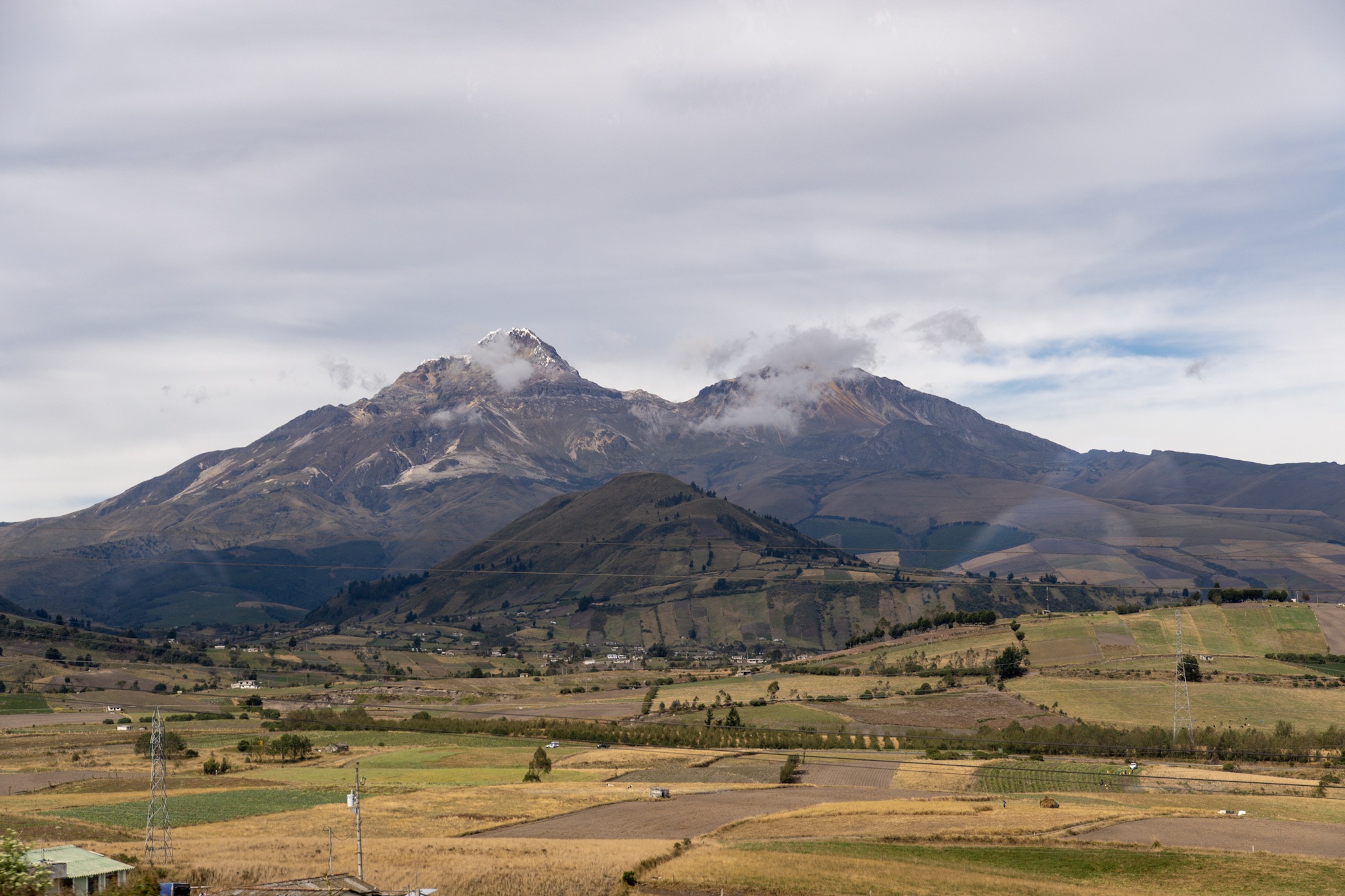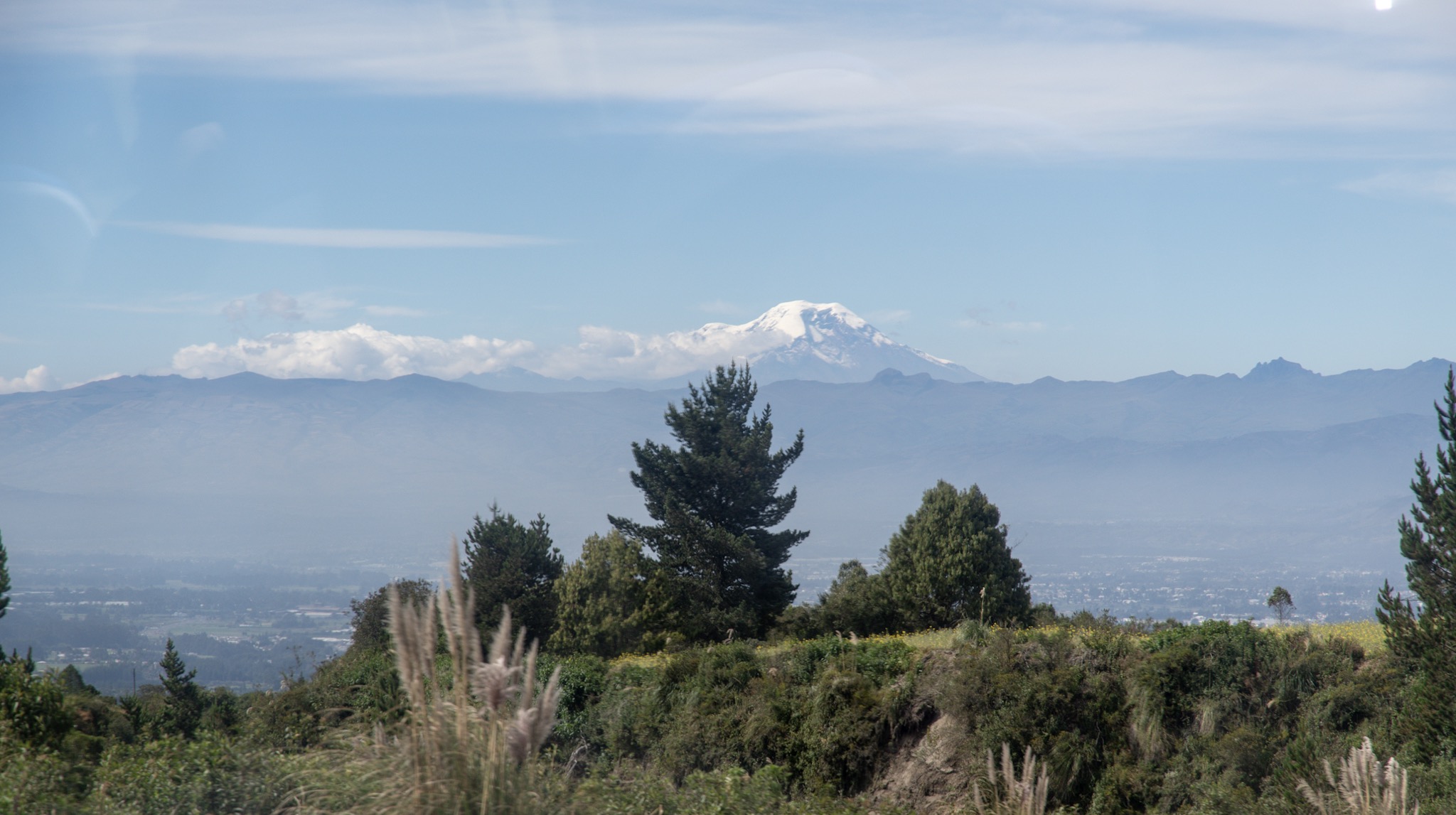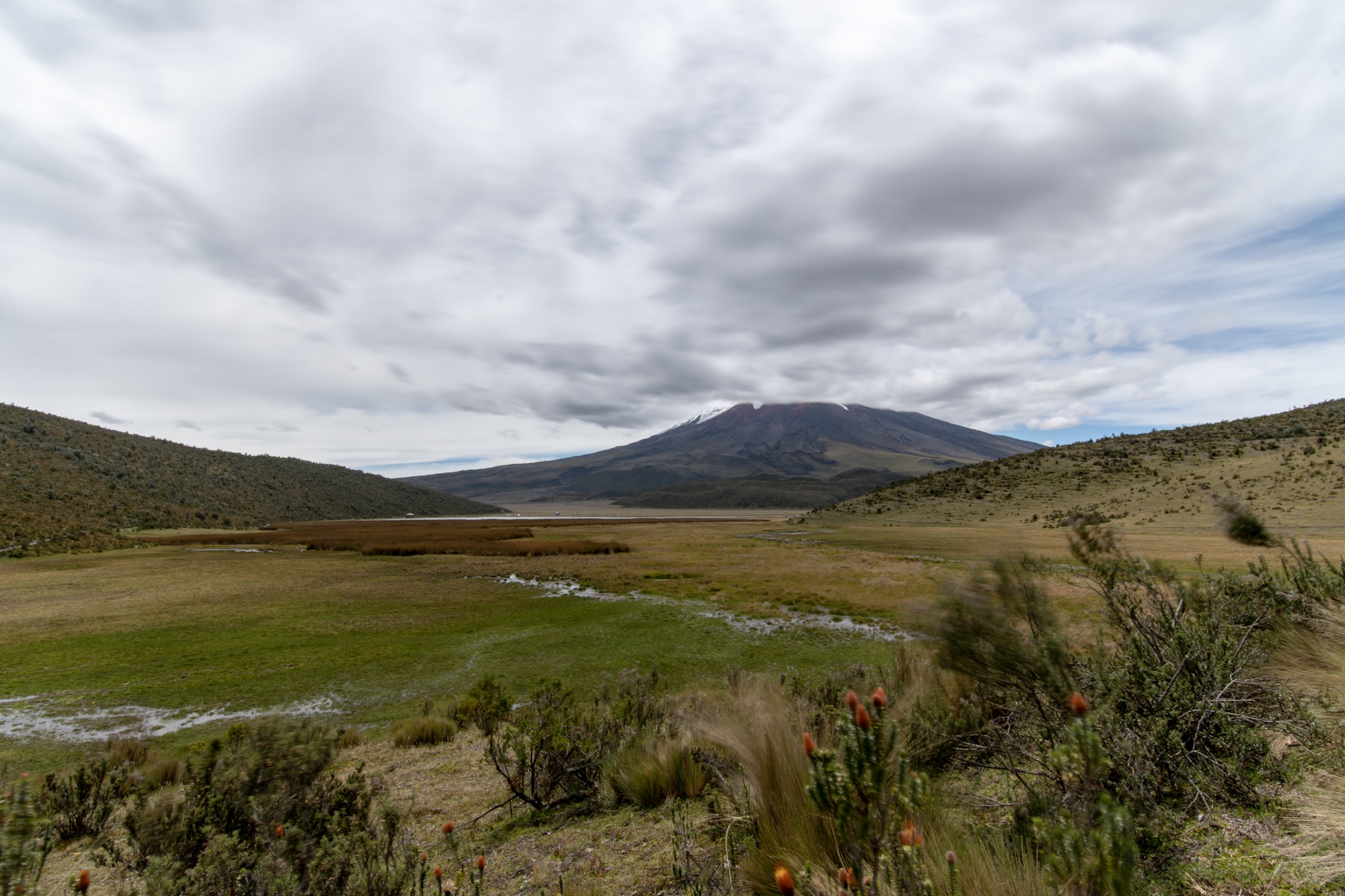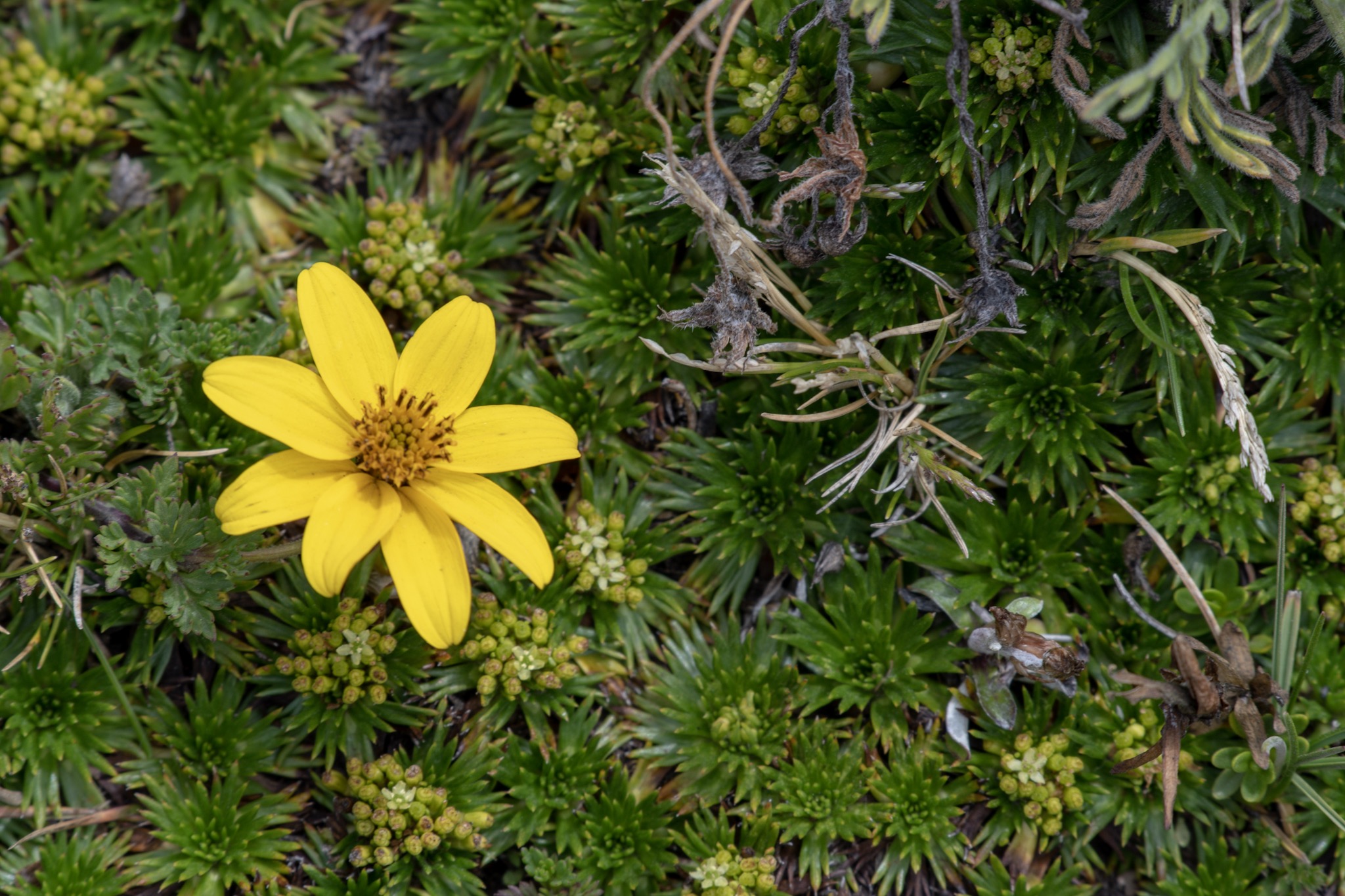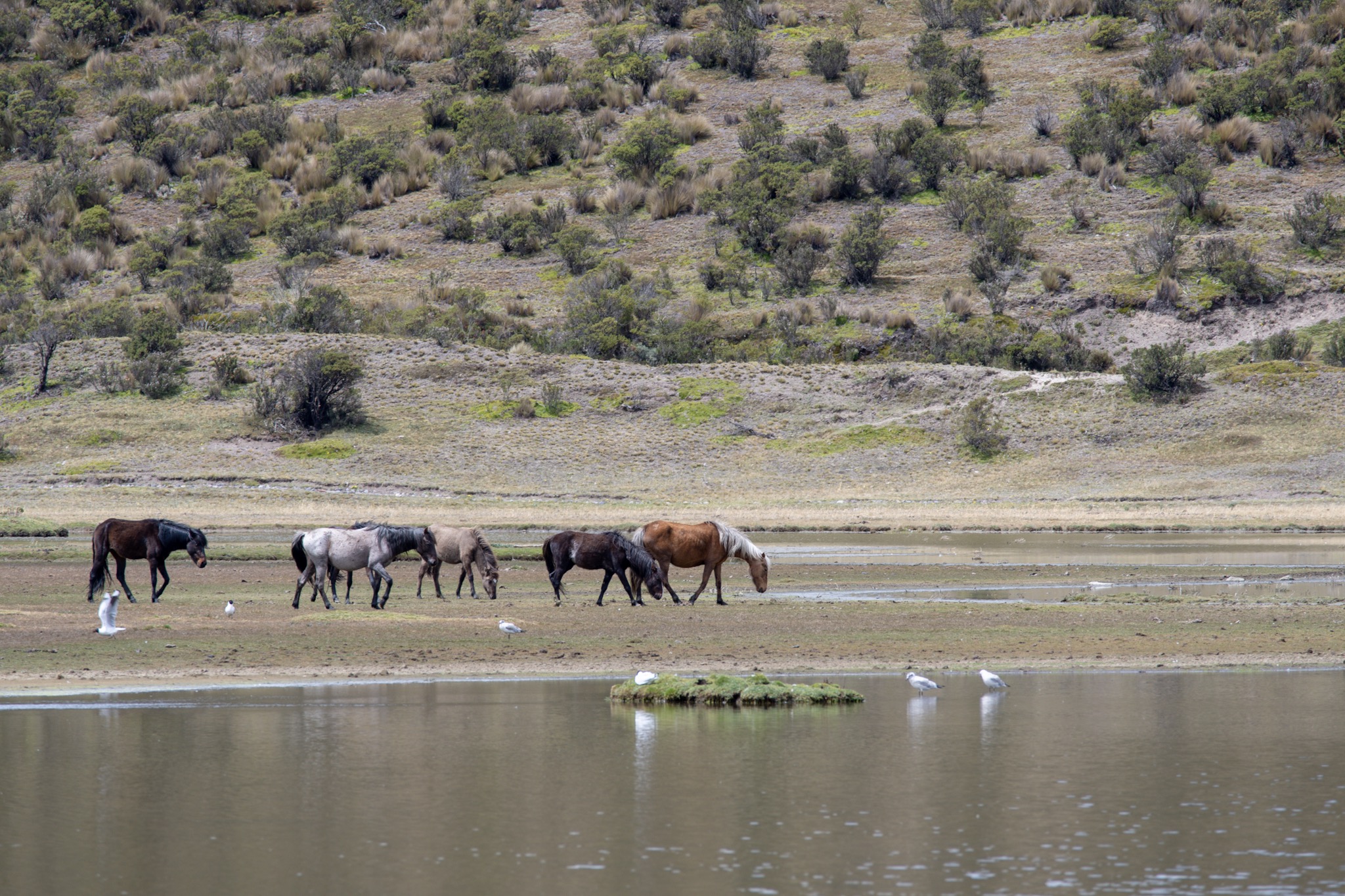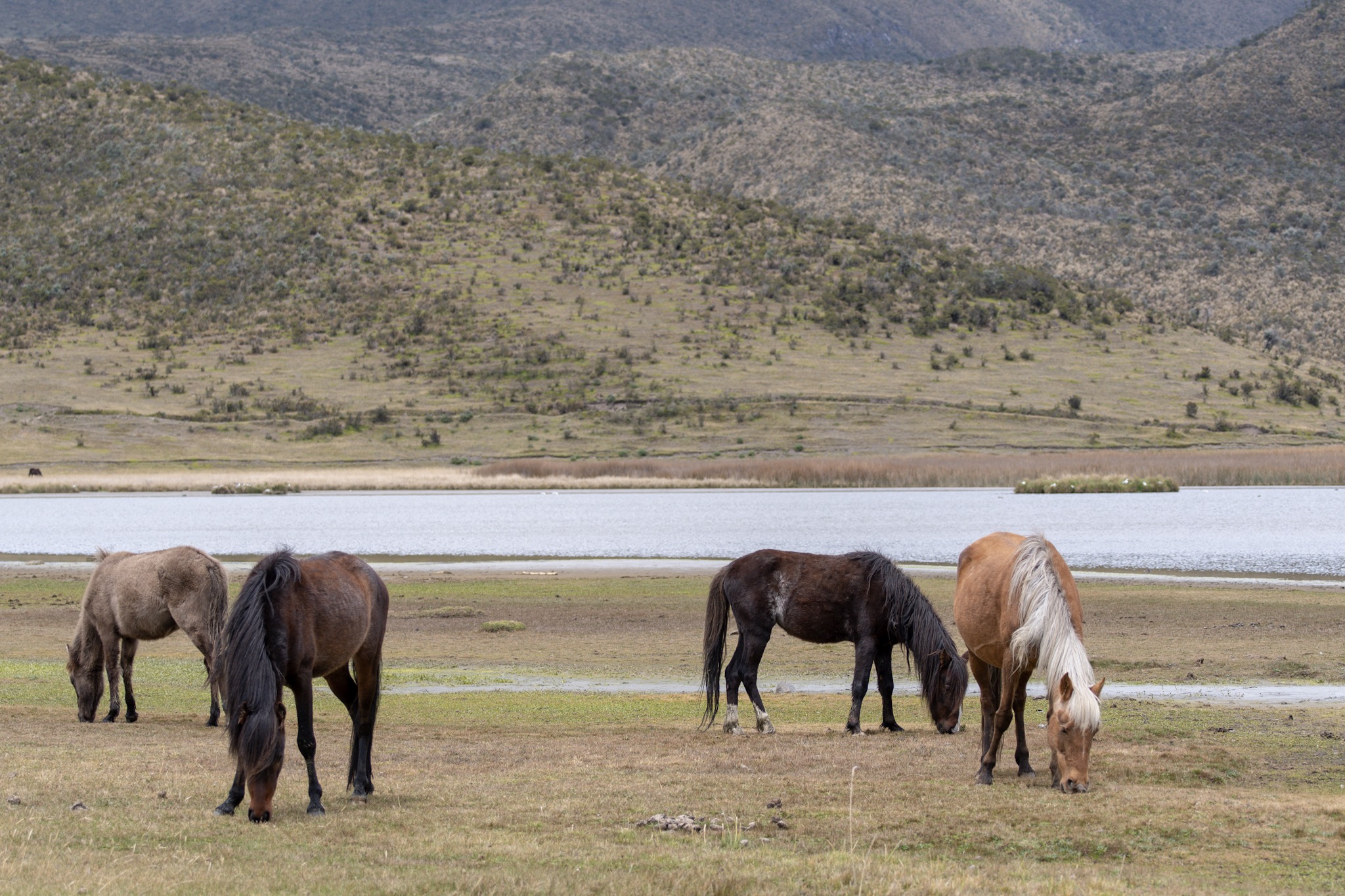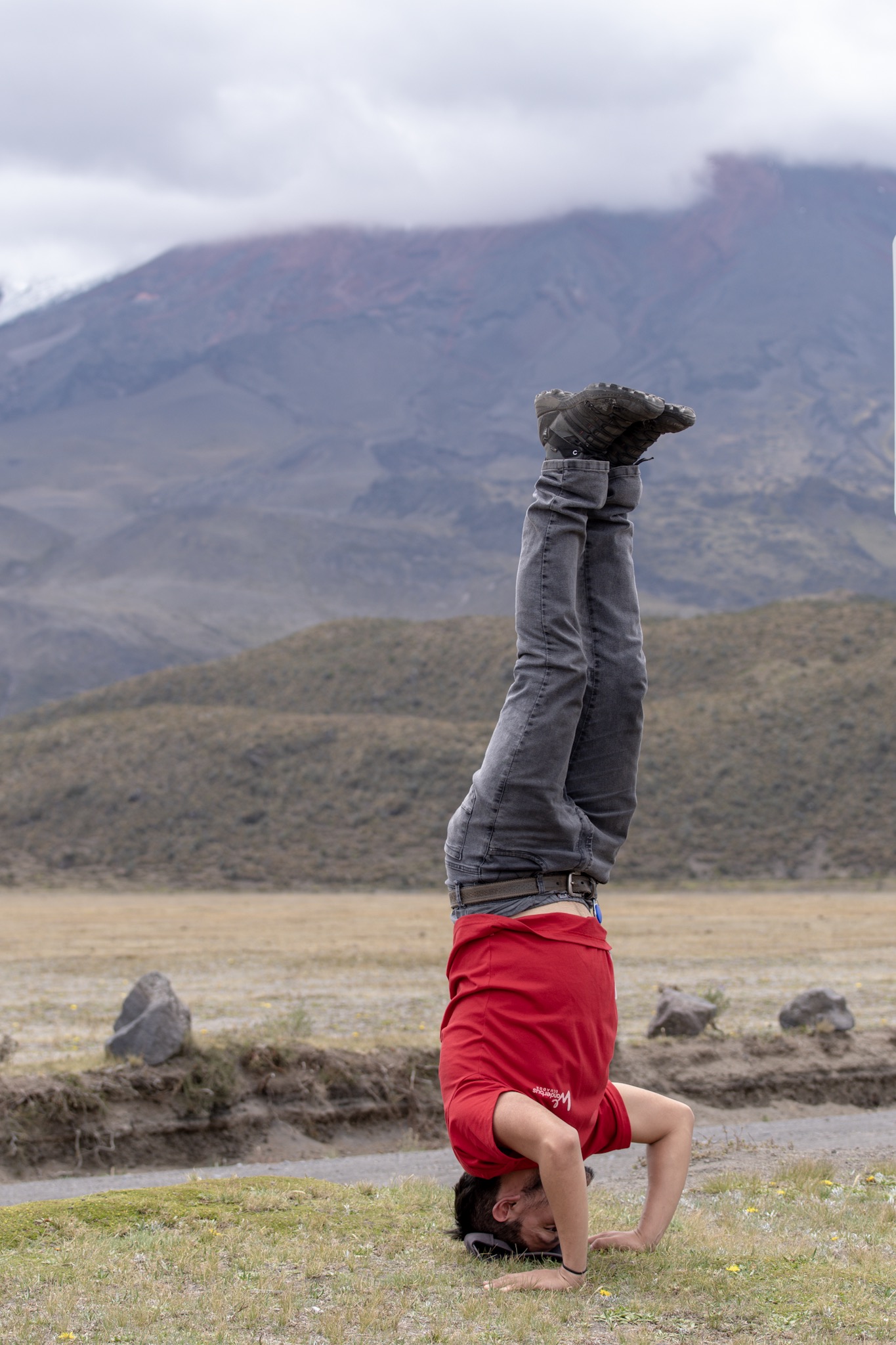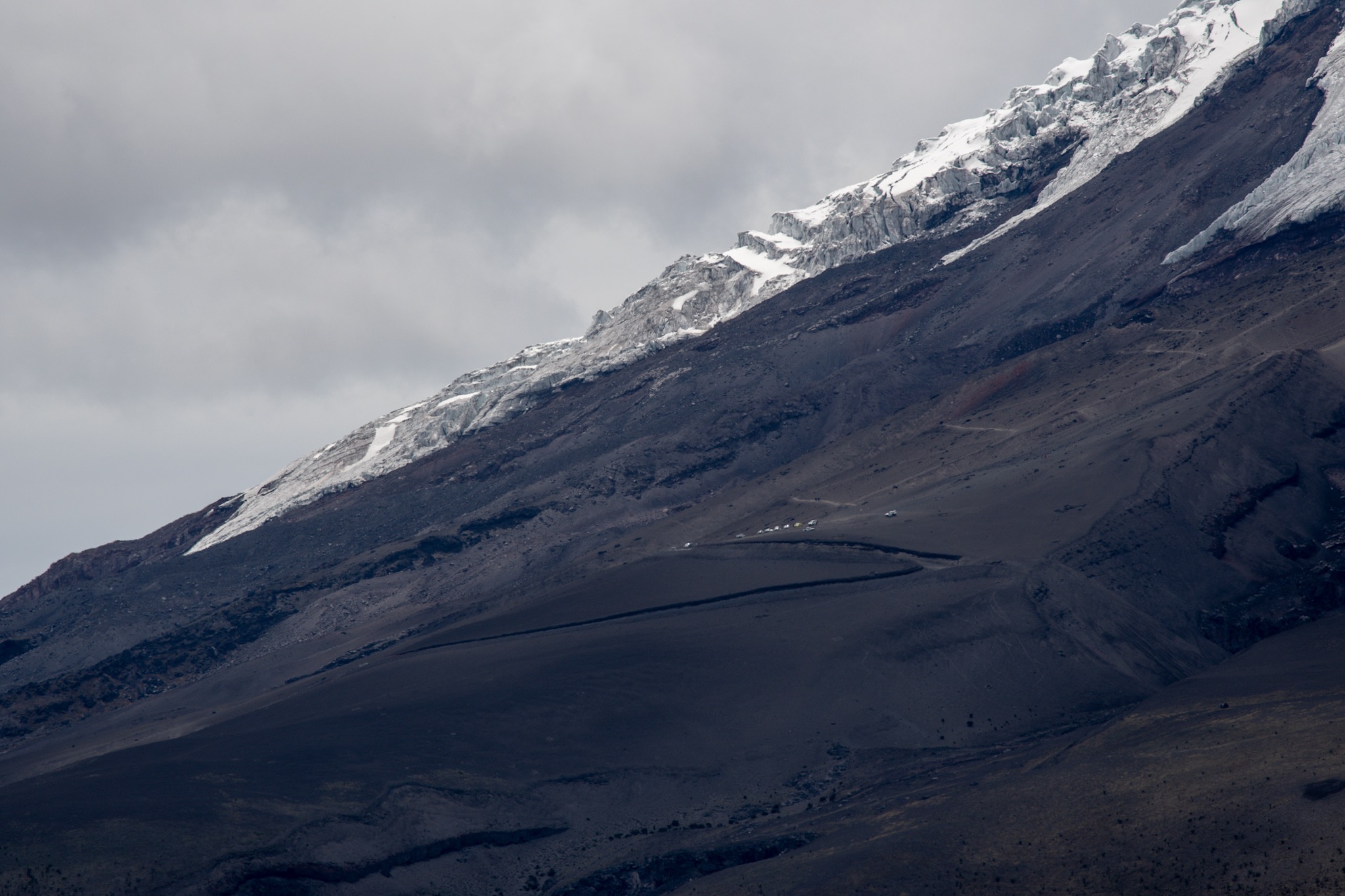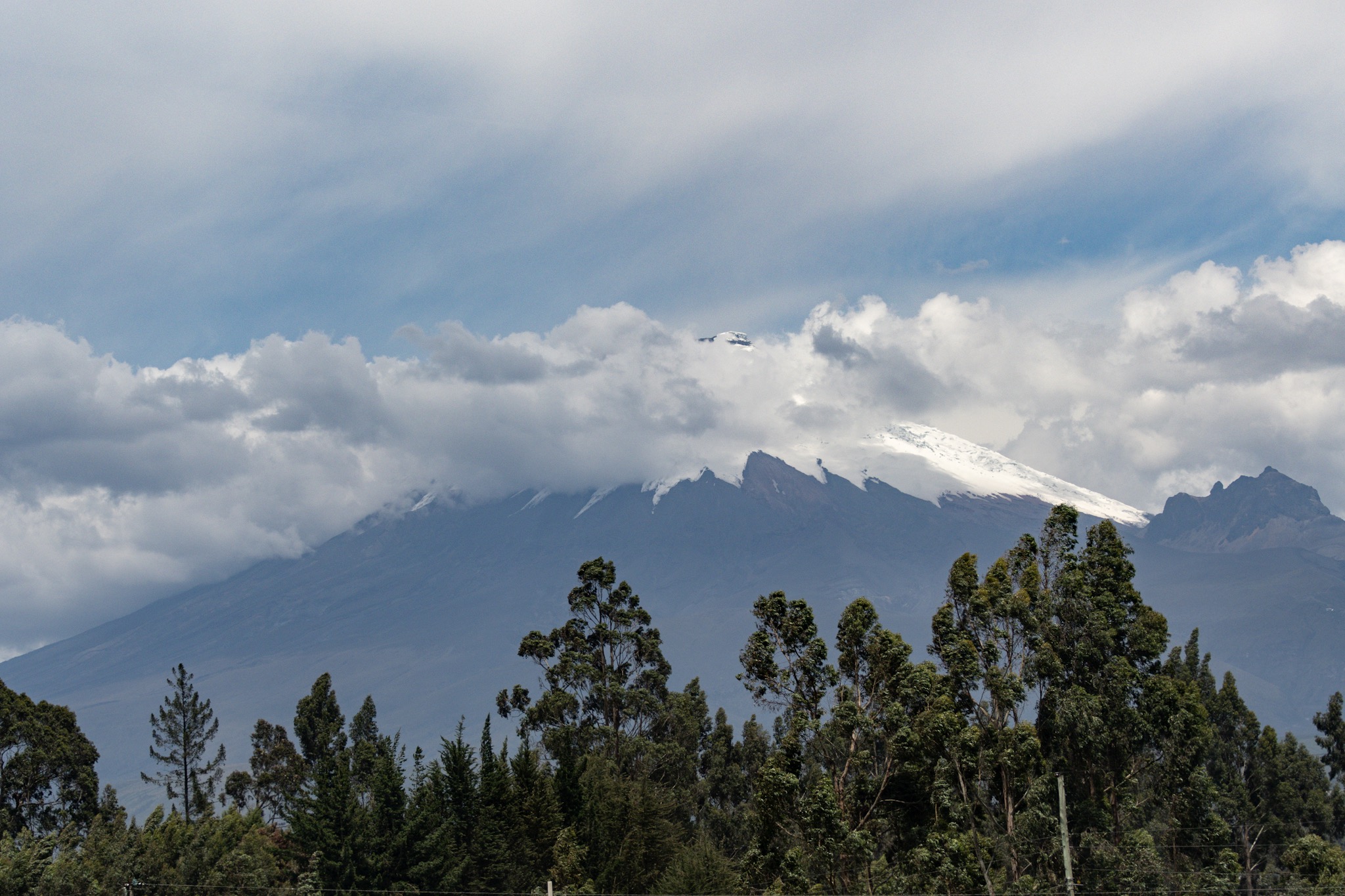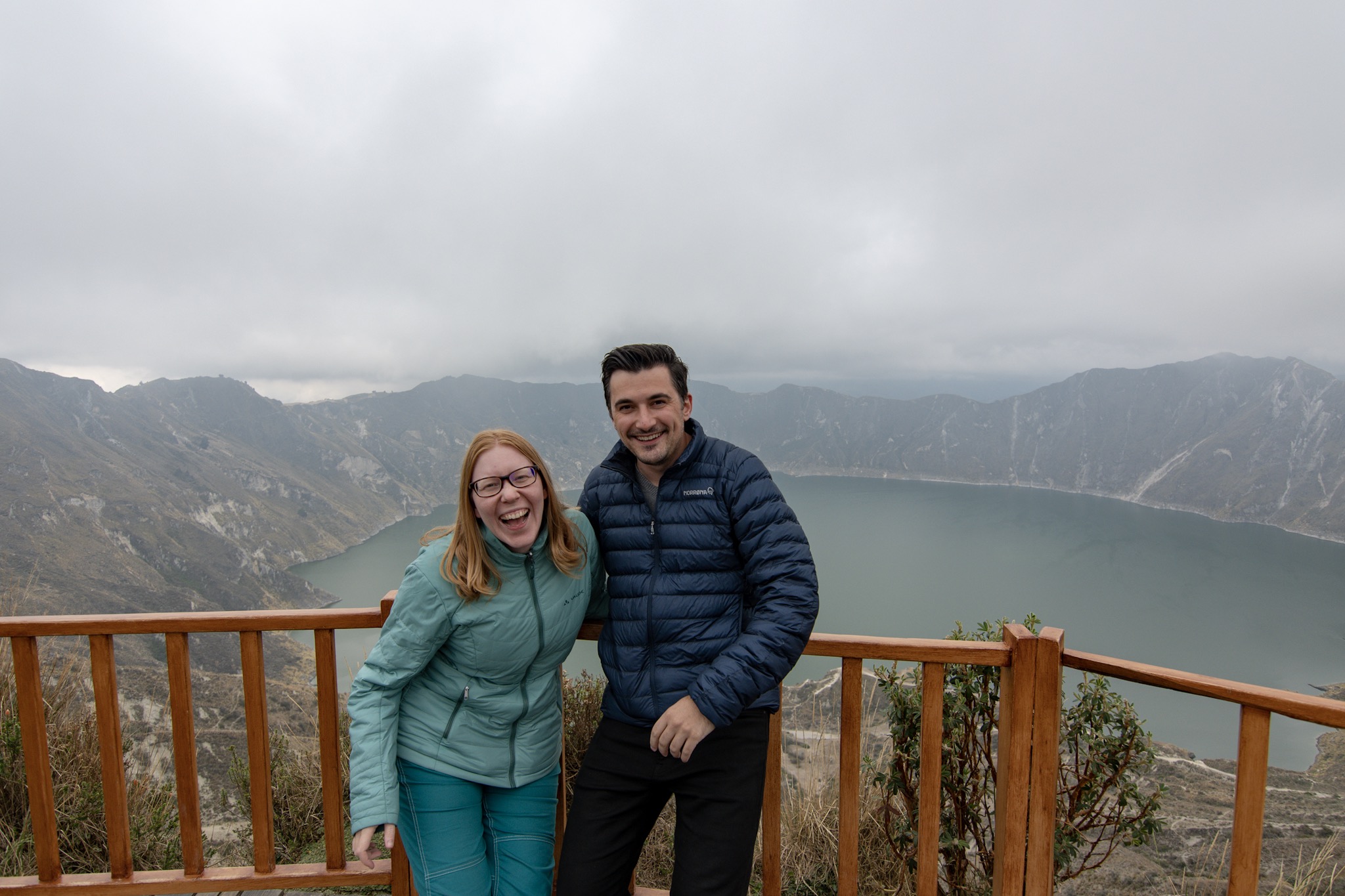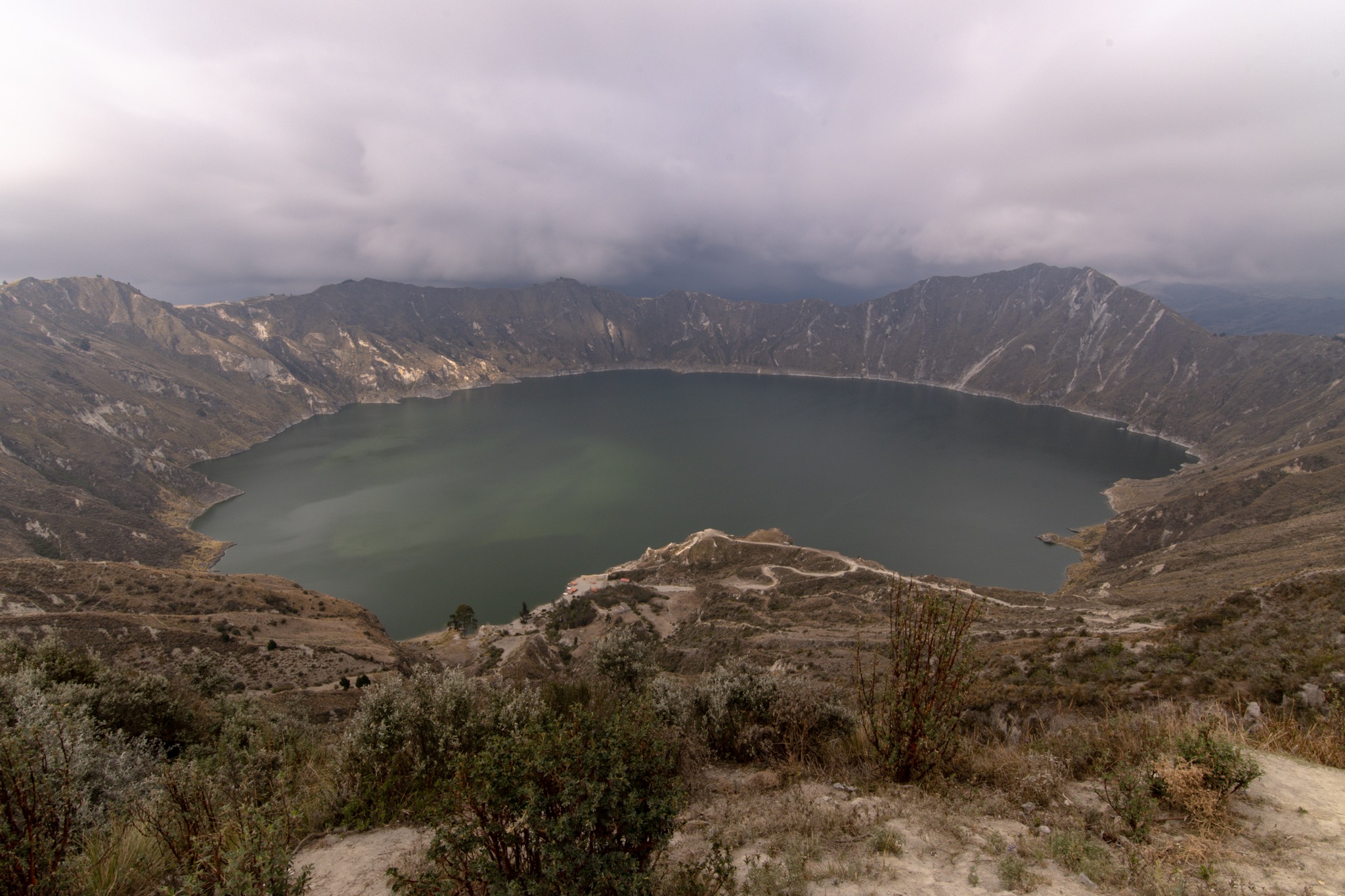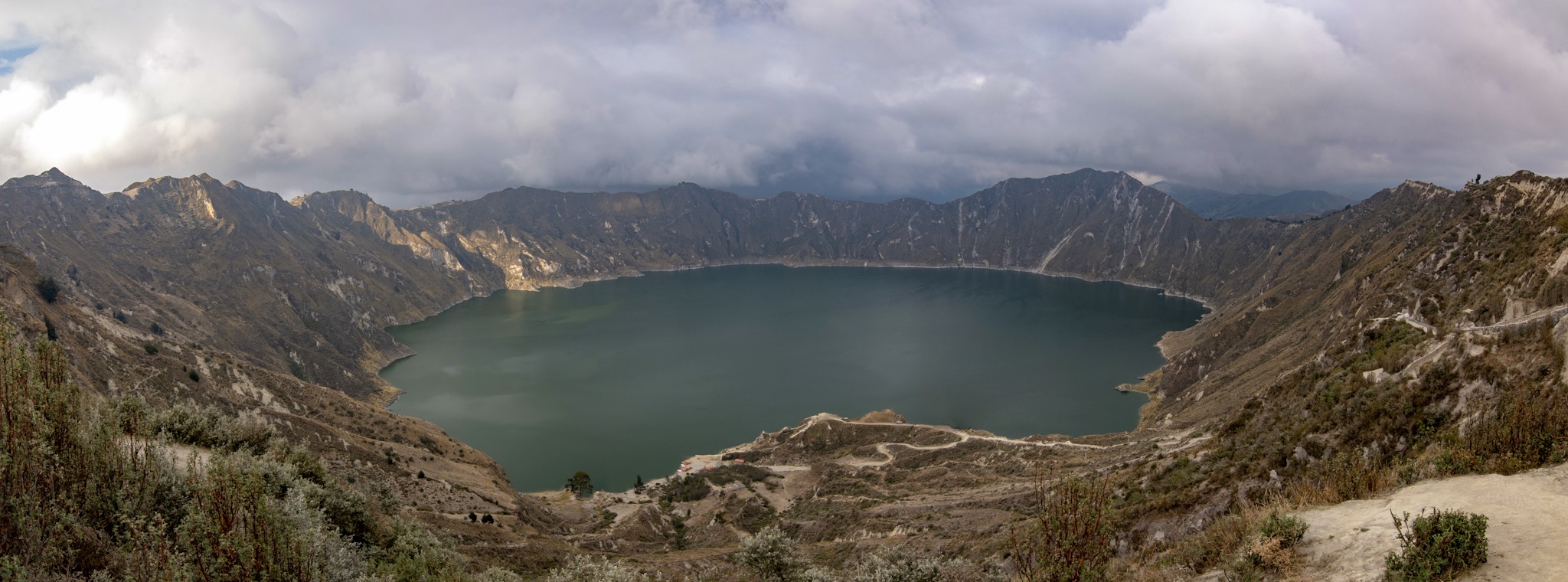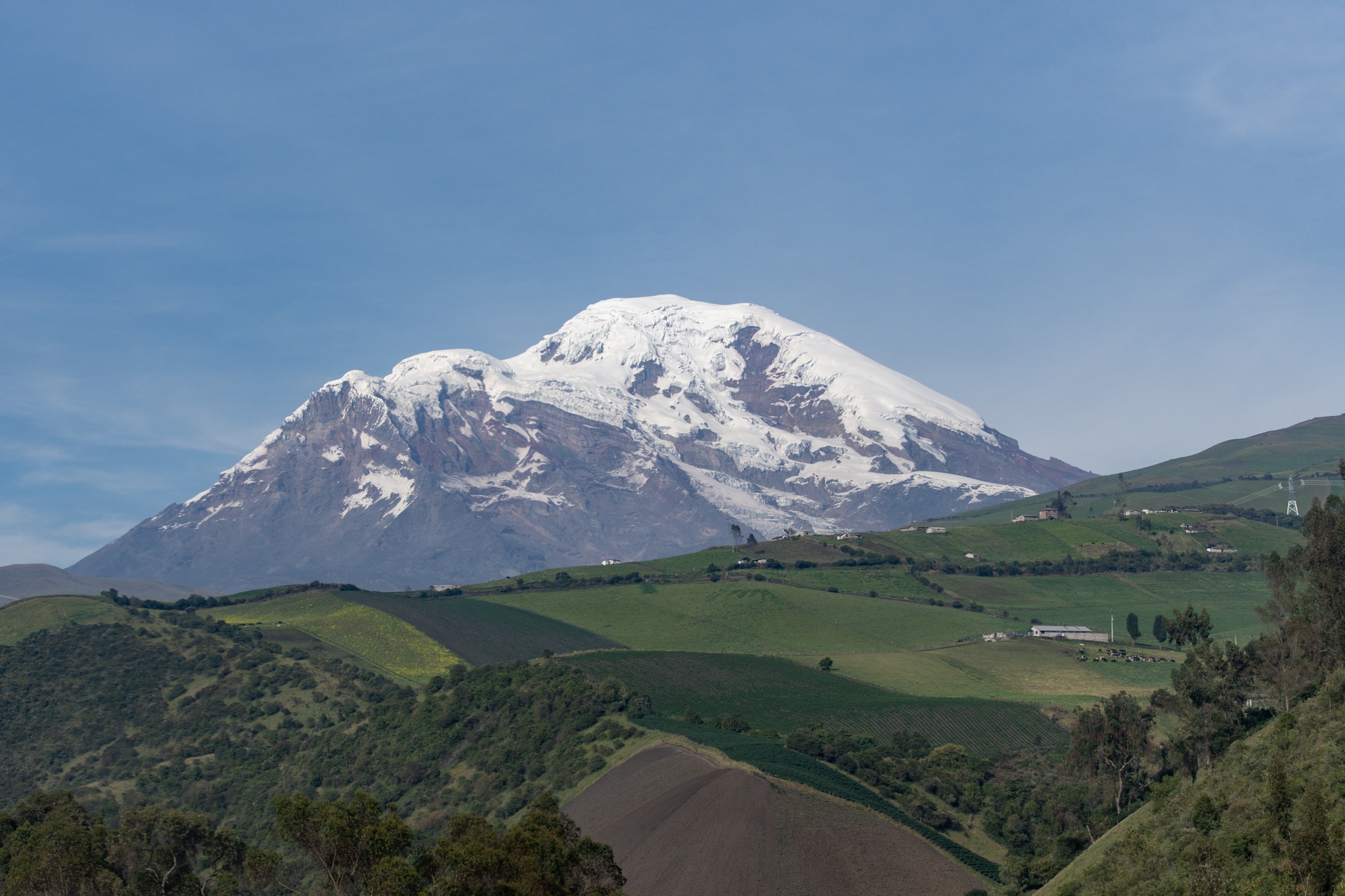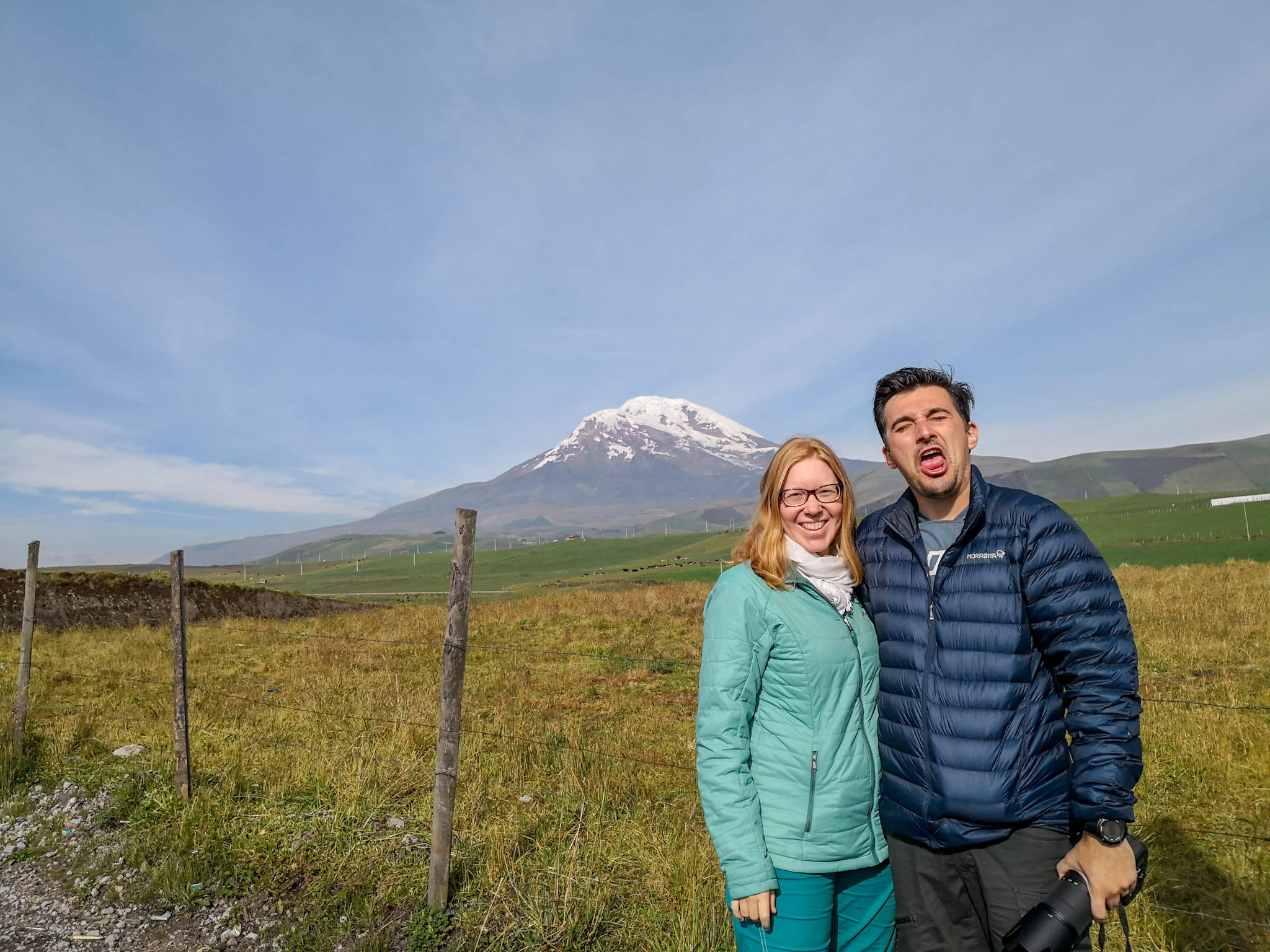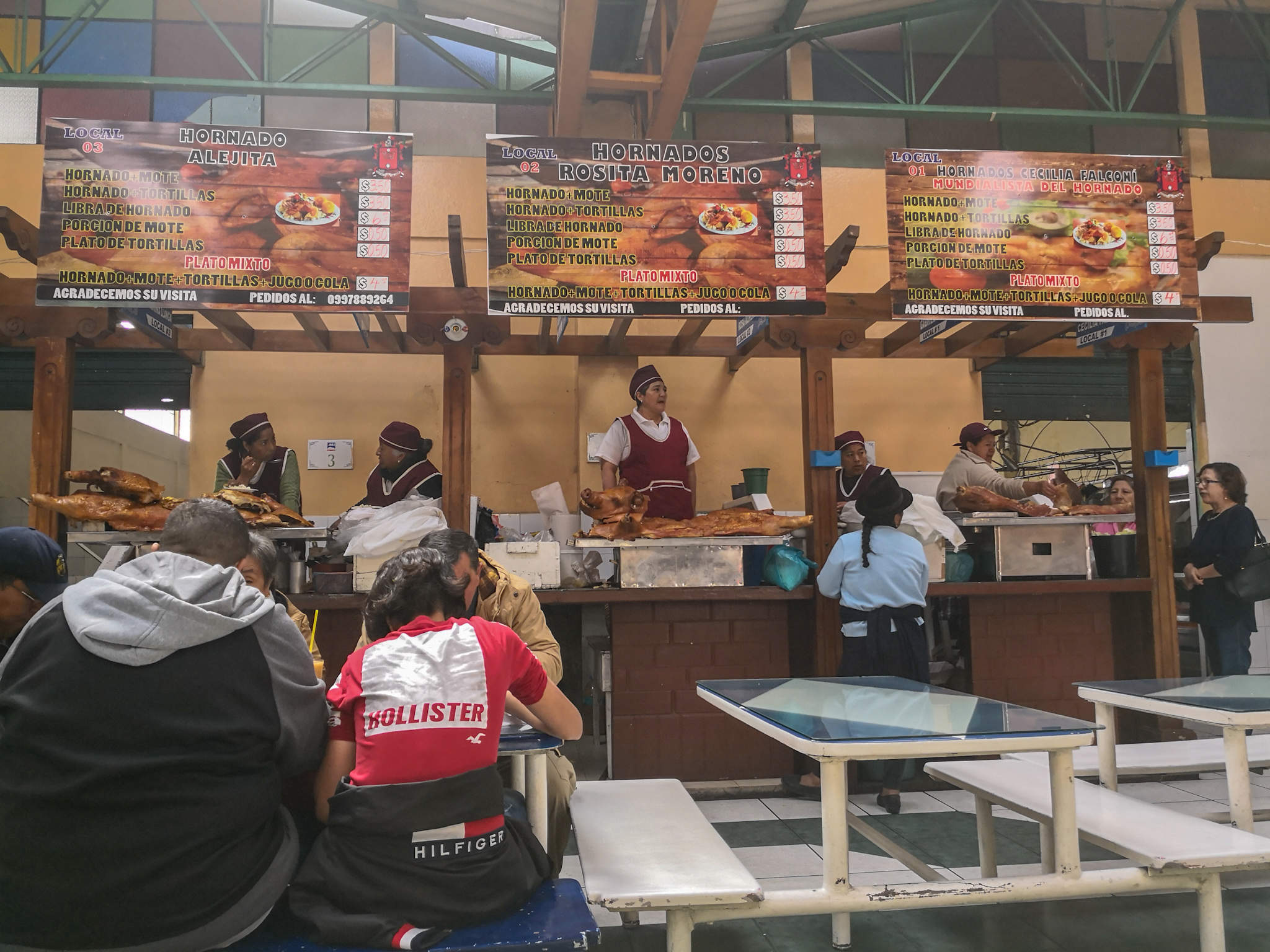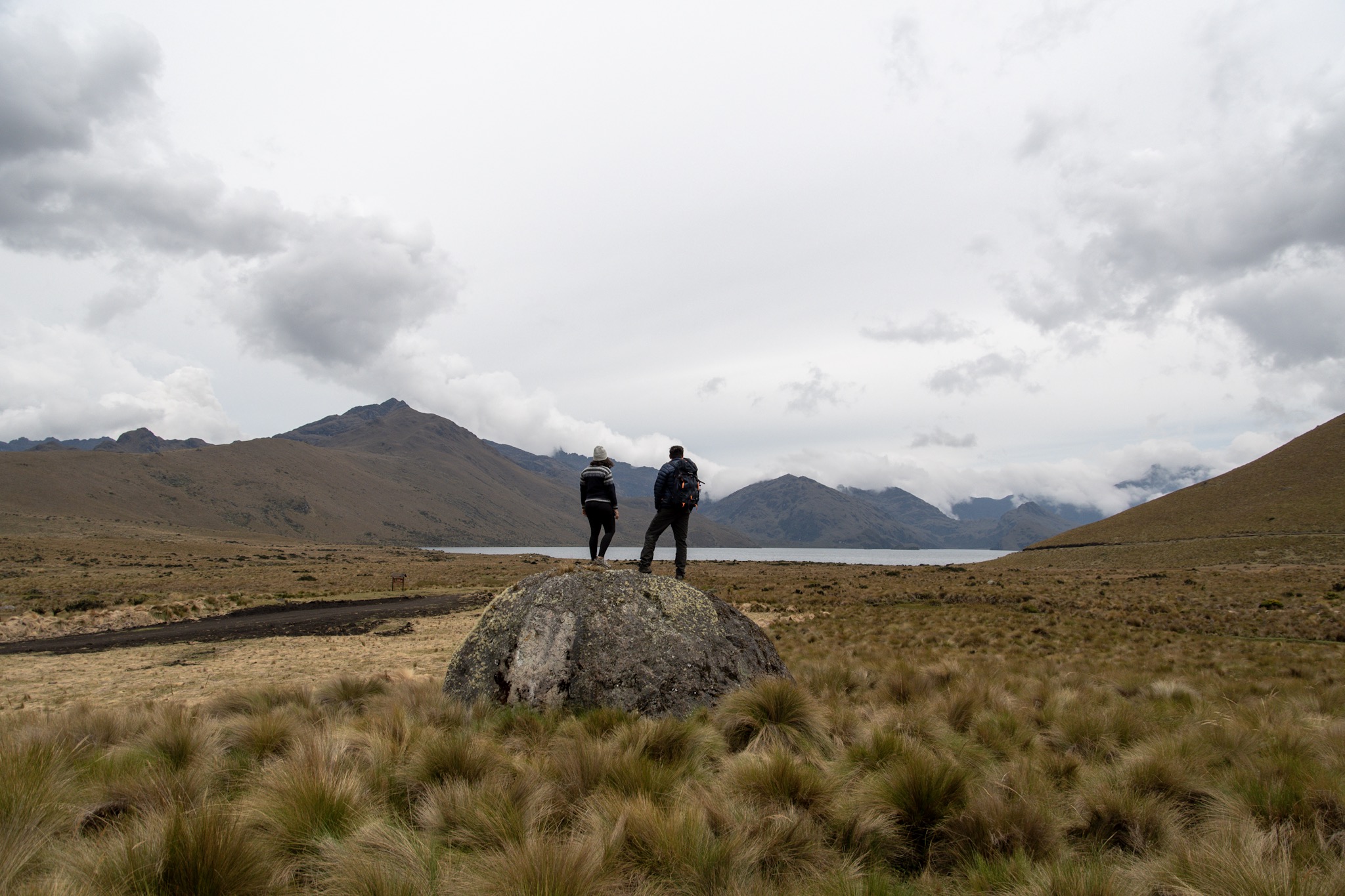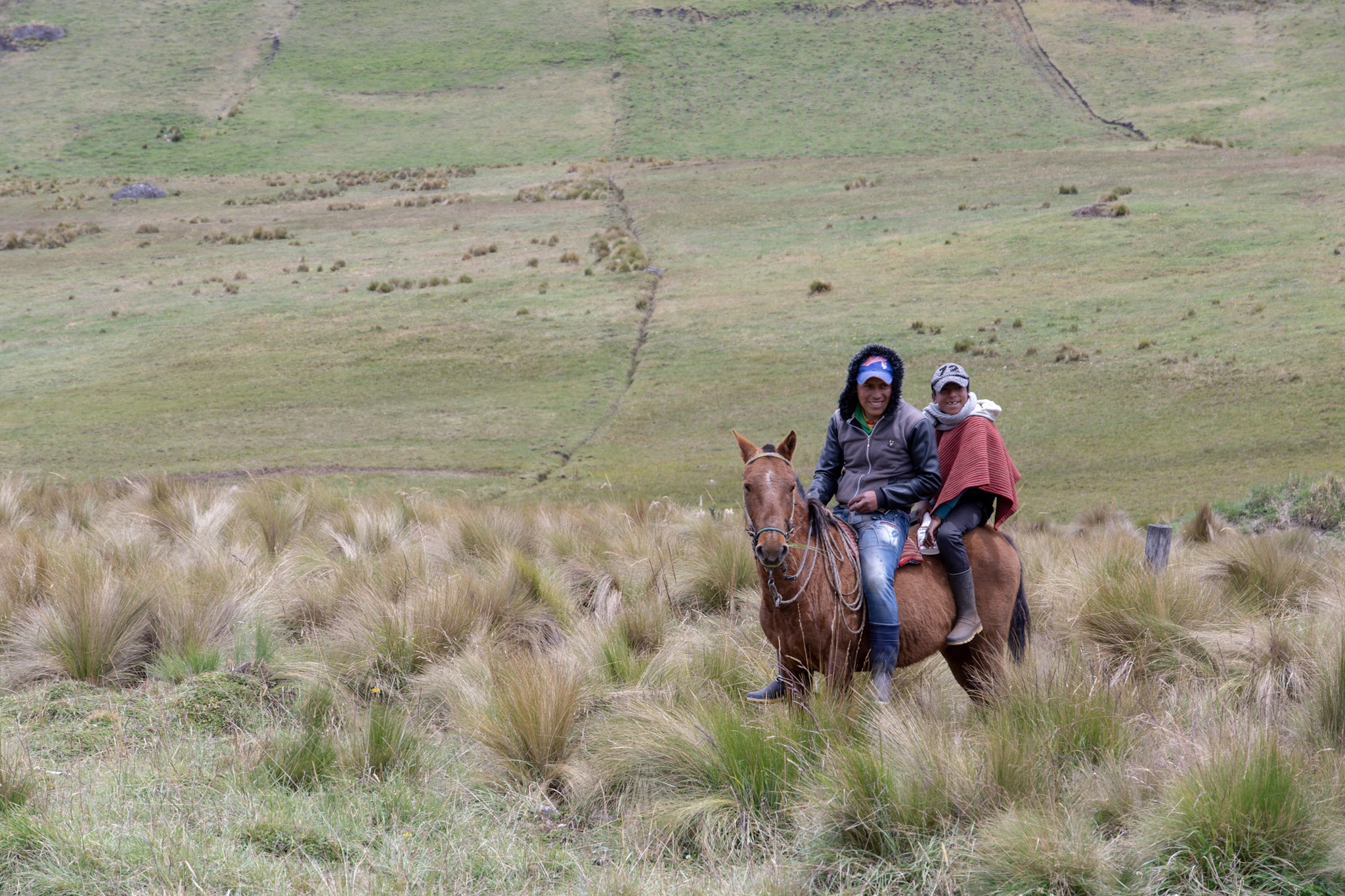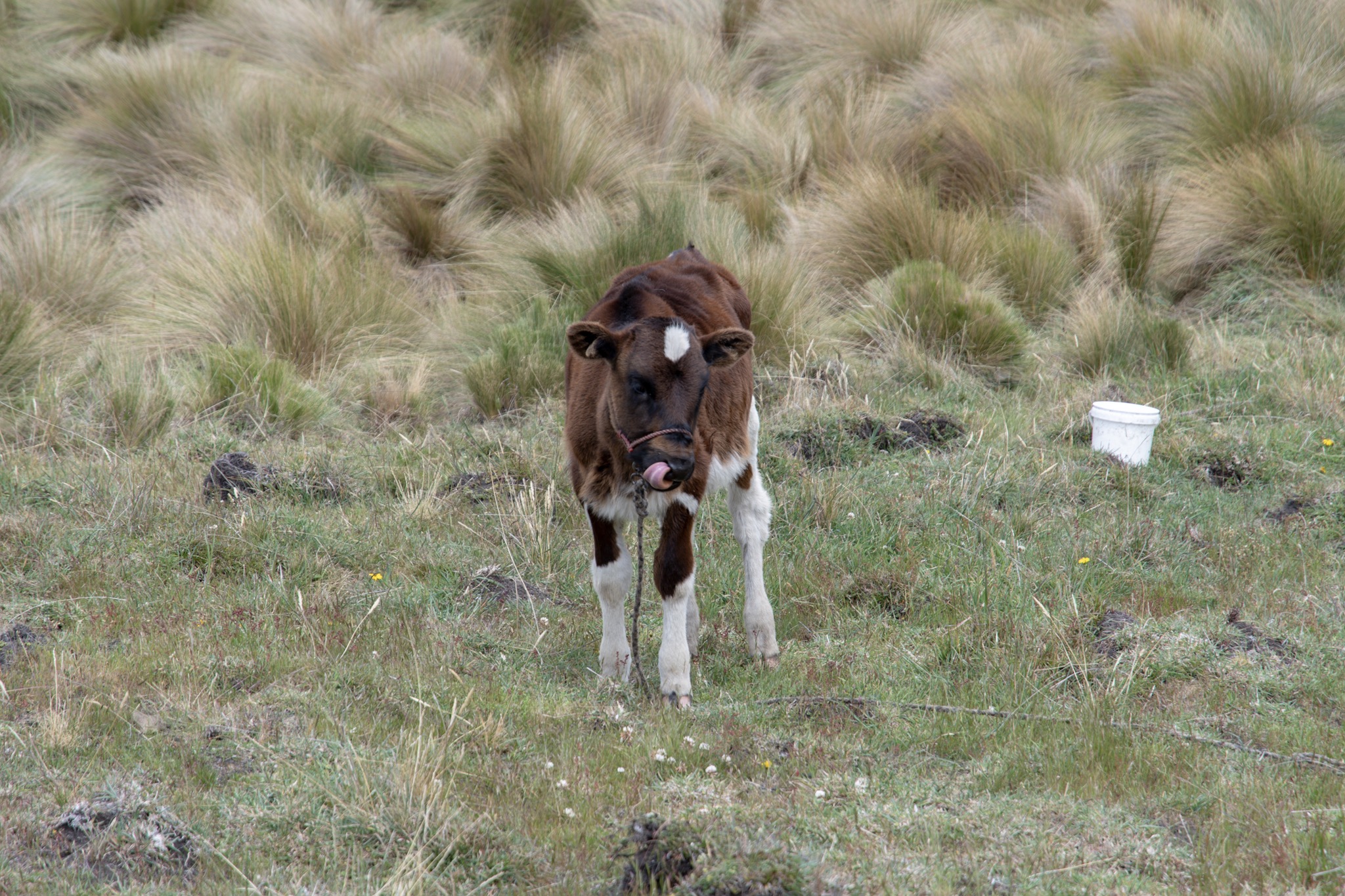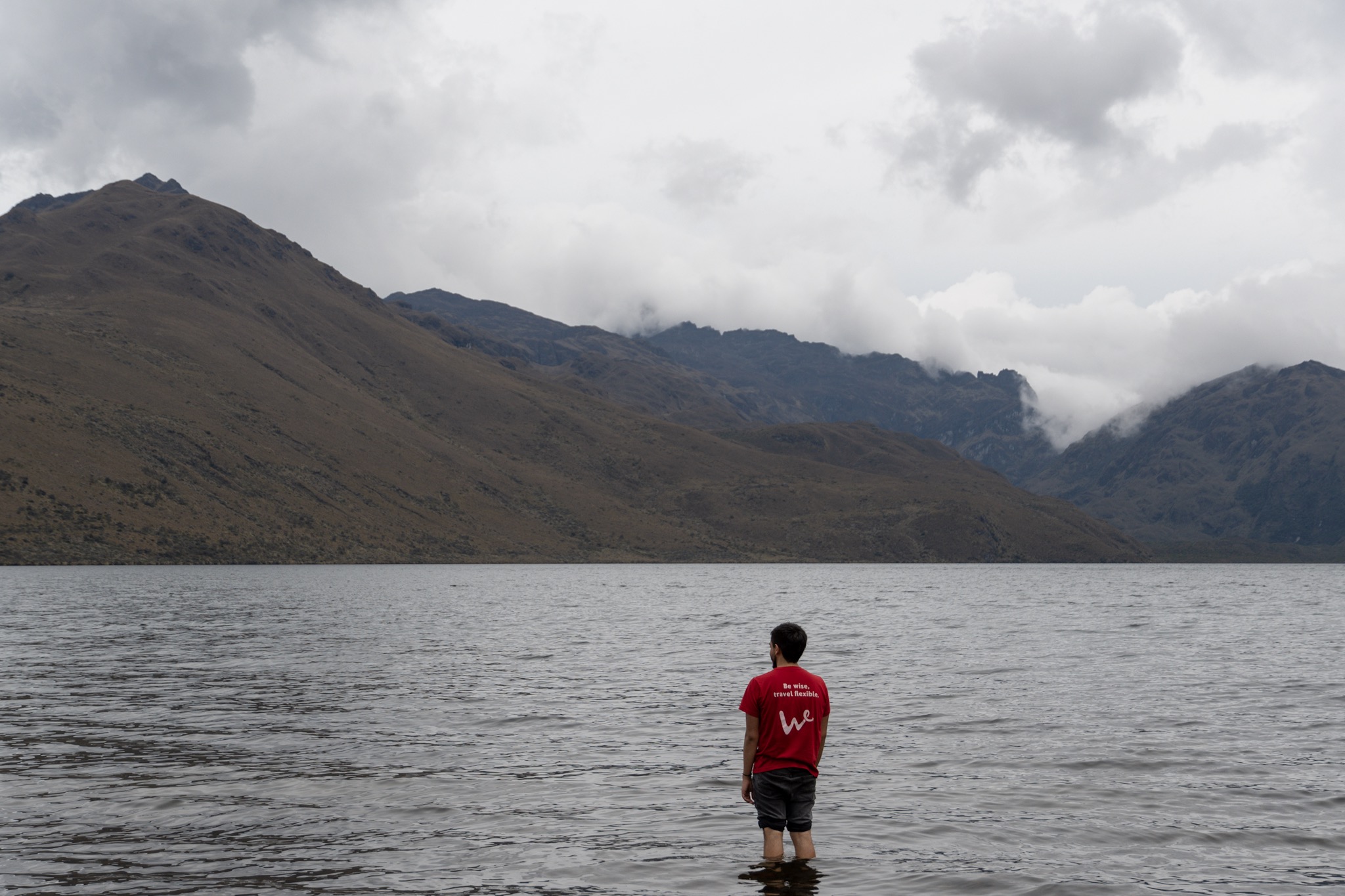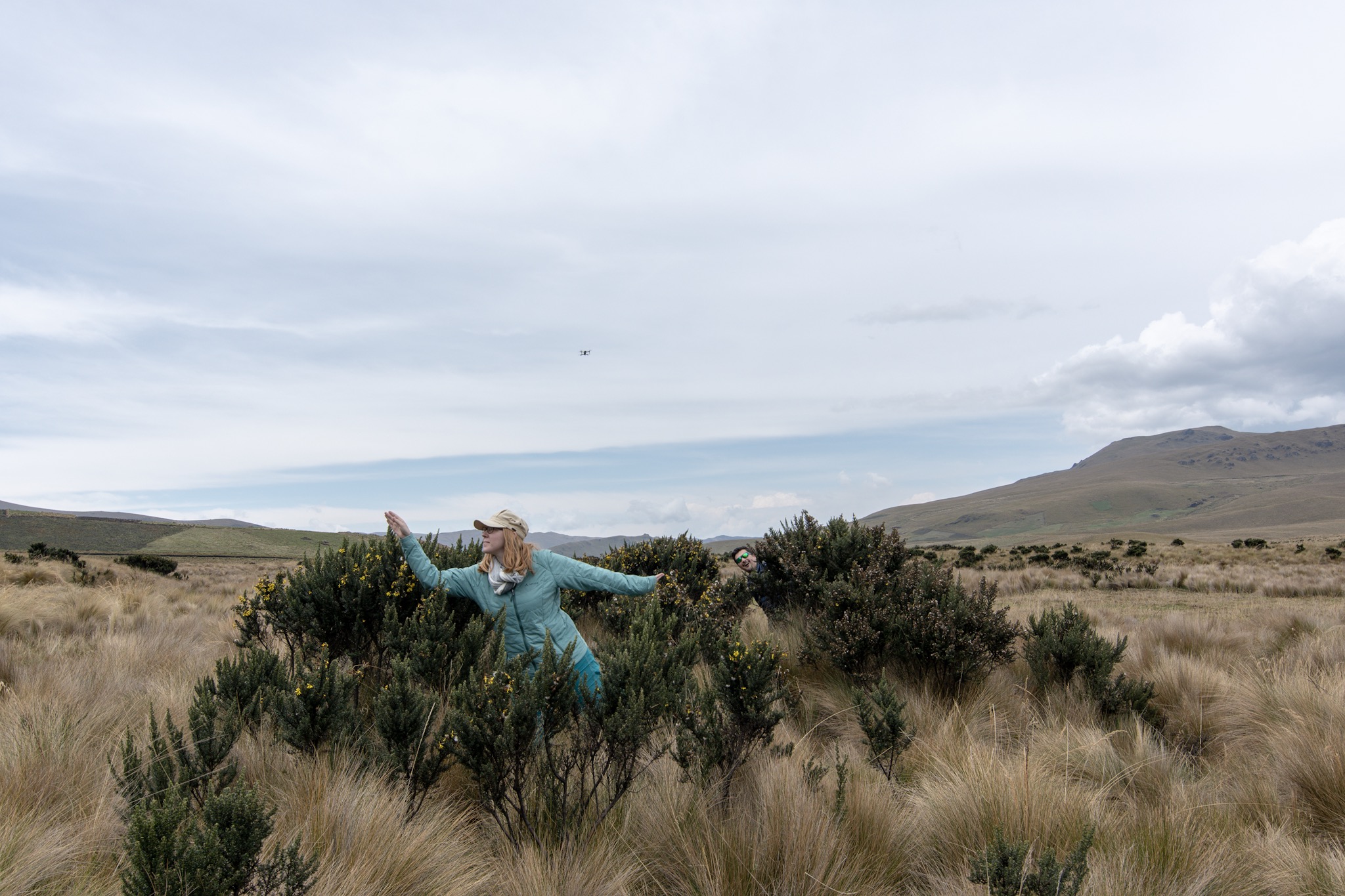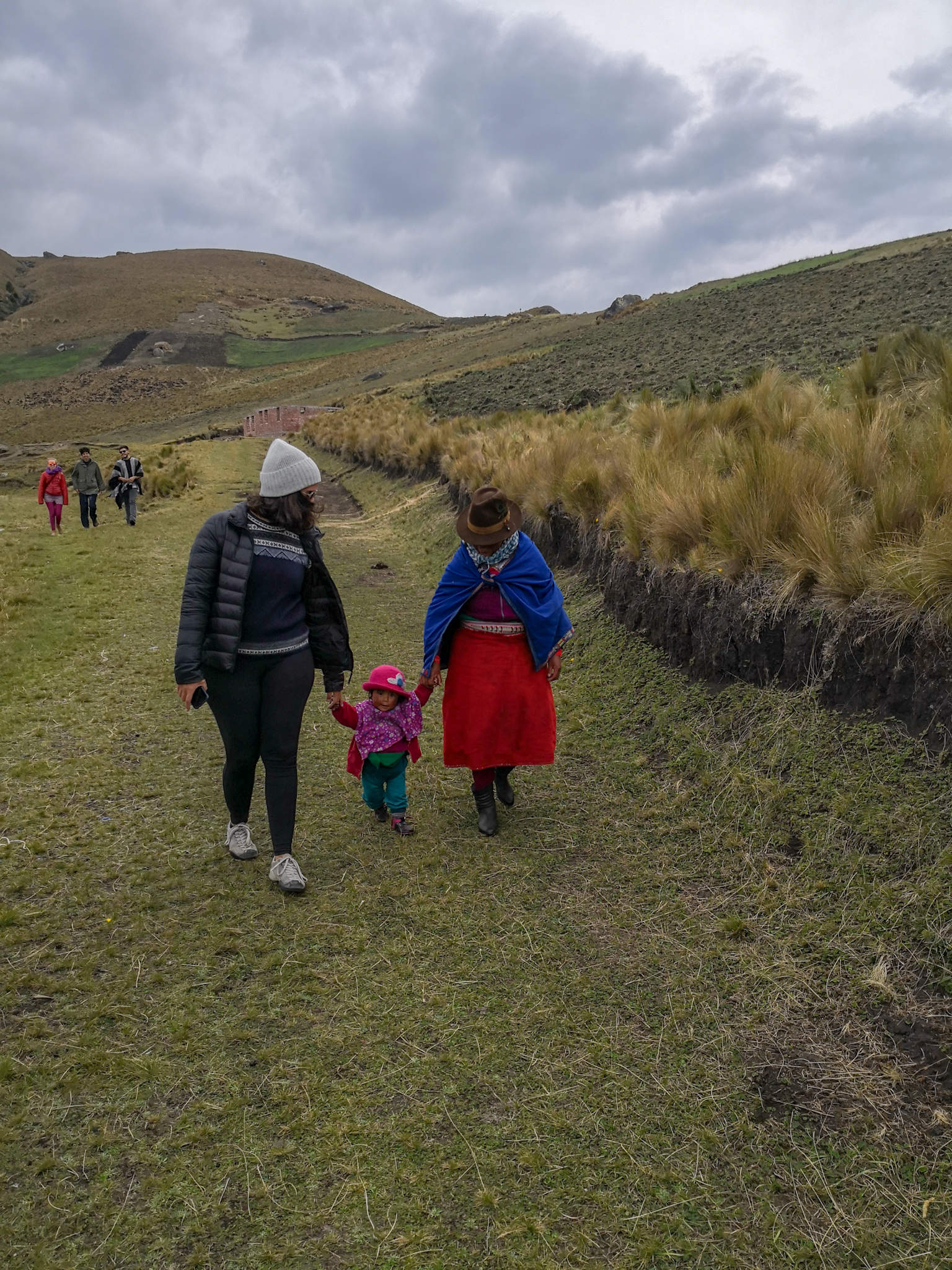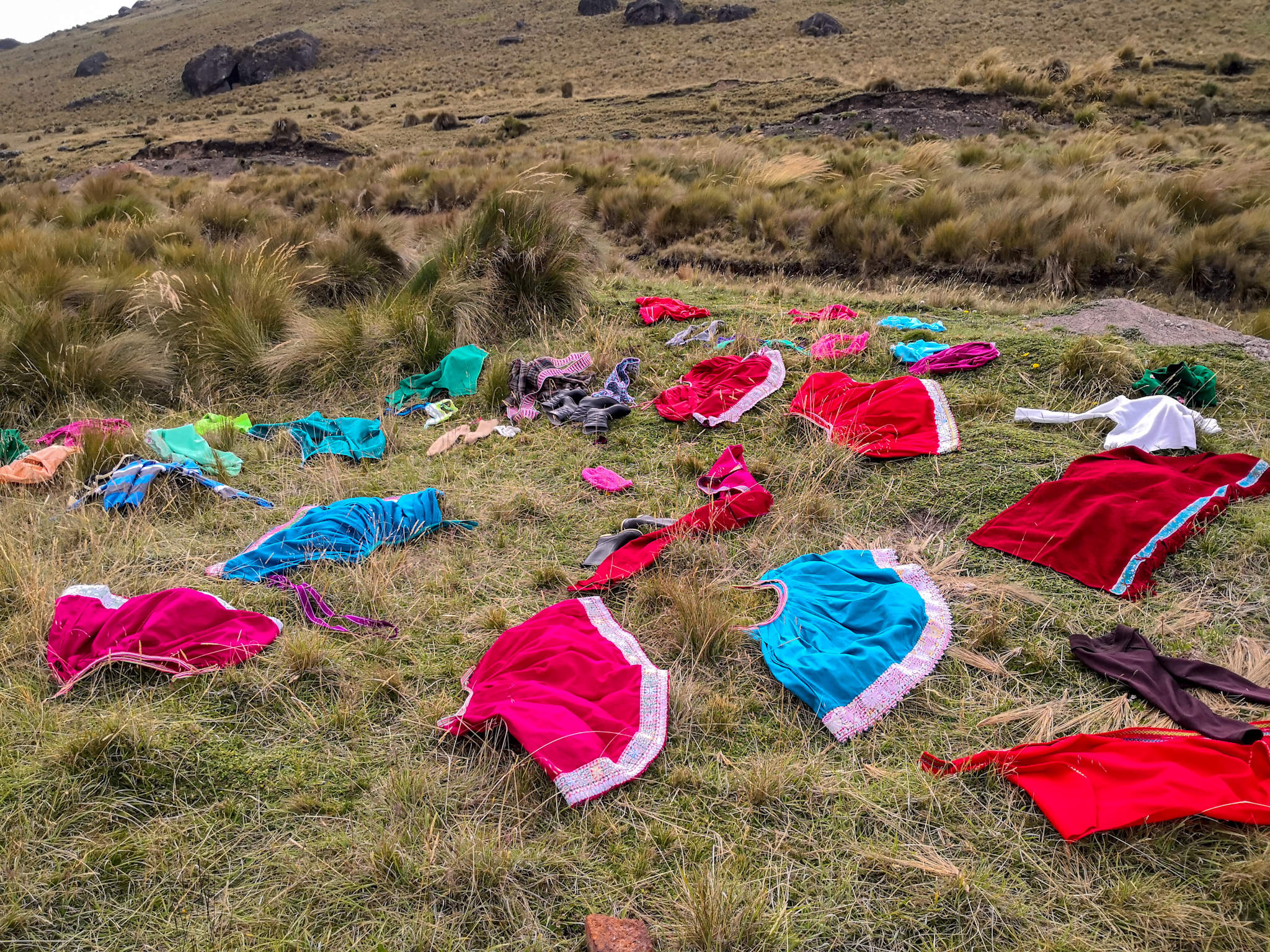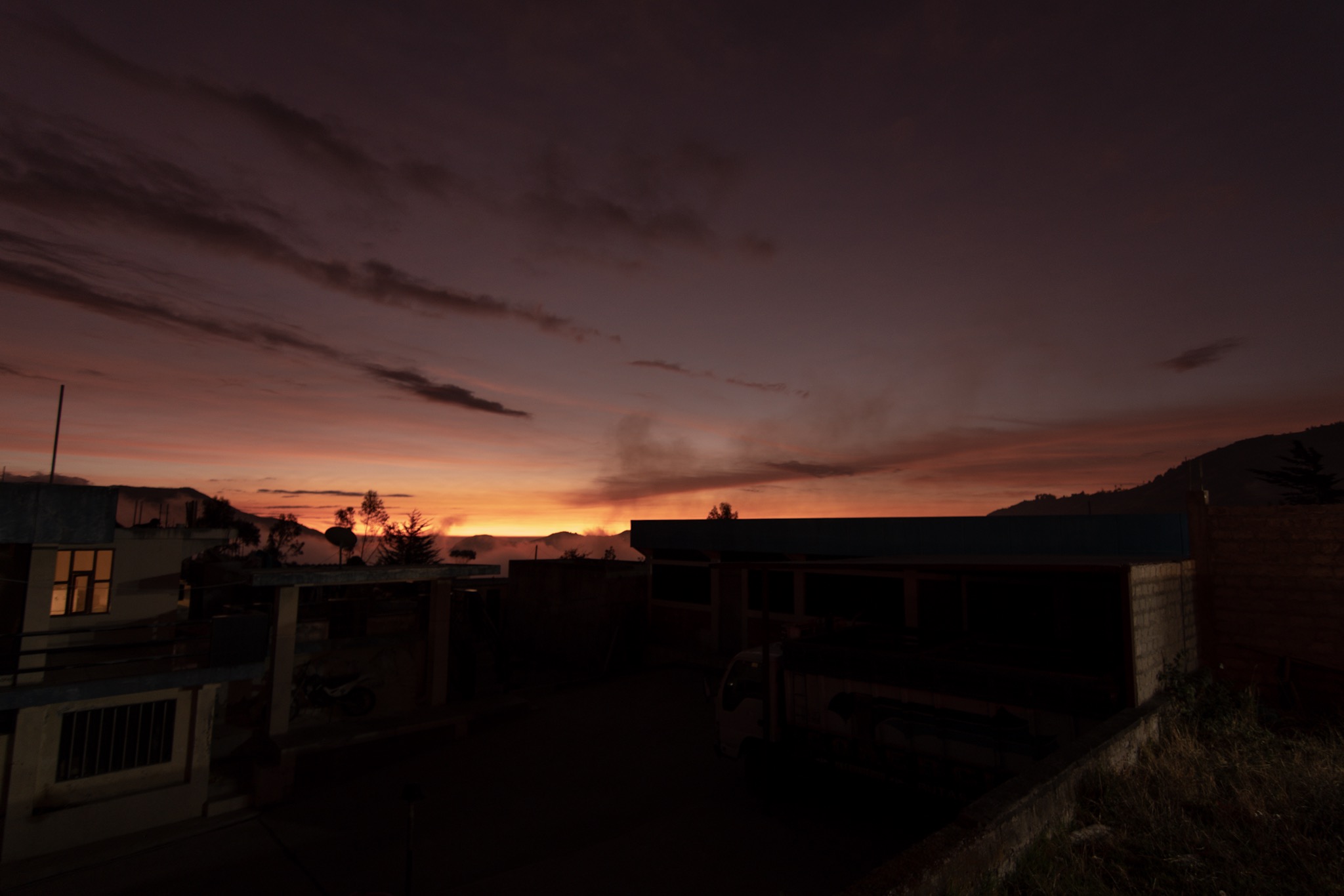Wanderbus (Part 1 - Cotopaxi, Quilotoa, Cuenca)
Unser nächstes Ziel war Cuenca und später Guayaquil für den Flug nach Galapagos. Da wir unbedingt Cotopaxi und Quilotoa sehen wollten und die Touren normalerweise teuer plus Start und Ende jeweils in Quito waren, suchten wir nach einer Alternative. Mit Wanderbus Ecuador hatten wir sie gefunden. Die Idee ist eine Art Hop-On Hop-Of Bus gepaart mit einer Tour. Man steigt an fixen Orten ein und aus, die Fahrt dorthin ist jeweils gespickt mit Aktivitäten und Sehenswürdigkeiten, Snacks und Wasser inklusive. Unsere Tour führte von Quito wieder nach Banos, dann nach Cuenca und von dort nach Guayaquil. Die Preise sind im Vergleich zu den öffentlichen Verkehrsmitteln sehr viel teurer aber dafür sehr viel günstiger als Tagestouren. Wir zahlten 194$ pro Person.
Wanderbus is the first and only Hop-On Hop-Of Bus that travels through Ecuador. From Quito to Banos, Cuenca, Guayaquil, Montanita and back to Quito. Since we haven’t seen Cuenca and wanted to see the Cotopaxi and Quilotoa without coming back all the time to Quito and our end destination was Guayaquil - it was the perfect option for us. The Prices are compared to the normal busses quite high but since it's more like a tour and snacks and water are included we found the price quite reasonable. We payed 194$ per Person.
Day 1 - From Quito to Cotopaxi, Quilotoa to Baños
Morgens um 6:30 Uhr gings los in Quito. Paul unser Guide hat uns souverän
das Programm erklärt. Nach gut einer Stunde erreichten wir eine Farm, wo wir
ein leckeres Frühstück hatten und zur Verdauung ein in Ecuador beliebtes
Ninja-Spiel mit der ganzen Reisegruppe spielten.
Wir hatten super Glück und das Wetter war so klar, sodass wir unterwegs immer
wieder einen super Blick auf die Vulkane hatten, man konnte sogar den Vulkan
Chimborazo sehen. Dies ist der höchste Vulkan Ecuadors und gleichzeitig der zur
Sonne nächste Gipfel der Erde.
Nächster Stopp war der Cotopaxi Nationalpark, den wir um ca. 9:00 Uhr
erreichten. Allerdings konnten wir erst um 9:45 Uhr in den Park. Grund für die
Verspätung: betrunkene Personen im Park, die Probleme machten! Leider war es
bereits wieder bewölkt als wir dann oben beim Parkplatz ankamen. Wir waren
nicht beim Basecamp sondern bei einem See in der Nähe, von wo aus man einen
super Blick auf den Vulkan hat. Dort leben, neben vielen einheimischen Tieren,
wilde Pferde und Kühe. Nach einer kurzen Wanderung ins Grüne konnten wir
unseren Pass stempeln lassen und Coca Tee trinken. Wir haben uns zwar nicht
wirklich anderst gefühlt danach, aber ja.
At 6.30 in the morning we started our Trip with the Wanderbus. Our Guide Paul explained the program for the day and we were already very hyped. After an hour we got a lovely breakfast at a farm. To help us digest we played a popular ninja game with the whole troop.
We were lucky and the weather was super clear, we could see a lot of volcanoes on our ride to the Cotopaxi Nationalpark. We could even get a glimpse at Chimborazo, the highest volcano of Ecuador and the closest point to the sun on earth.
At Cotopaxi Nationalpark we had to wait for 45 min. due to drunken people in the Park that caused troubles, haha! Sadly it was already cloudy again when we arrived at our viewing point. We did not go up to the basecamp, only to a nearby lake where you have a nice view of the volcano. At that spot live, next to many native animals, wild horses and cows. After a short walk we were able to stamp our passports and drink some coca tea. We did not really feel different afterwards.
Nach dem Mittagessen gings Richtung Quilotoa, ein Kratersee in einem inaktiven Vulkan. Für die Wanderung zum Kratersee und retour braucht man etwa 2-3 Stunden, möchte man den ganzen See umrunden, braucht man 6-8 Stunden. Es ist möglich im Krater zu zelten, dann kann man bei klarem Himmel extrem viele Sterne sehen. Es ist allerdings im Oktober schon sehr kalt, man ist auch auf fast 4000m.u.M. Alternativ gibt es auch ein sehr einfach ausgestattetes Hostel.
Als wir ankamen lag dicker Nebel über dem Dörfchen. Doch wieder hatten wir Glück und der See war trotz Nebel sichtbar. Mit der Zeit schien sogar ein bisschen die Sonne durch.
Viele Kurven und Hügel später kamen wir in Baños an, wo wir übernachteten.
After the lunch we continued to the next destination, the water-filled caldera of the inactive Quilotoa volcano. For the trek to the caldera and back to the viewpoint you need around 3 hours, if you want to take the loop around the caldera 6-8 hours. It’s possible to camp in the caldera, with a clear sky the stargazing is said to be amazing. But it can get quite cold in October, mainly because of the altitude of almost 4000m above sea level. Alternatively there is a basic hostel as well.
When we arrived at the outlook there was thick fog over the village. Luckily the caldera was nevertheless visible. Later even a few rays of sunlight shone through.
Many curves and hills later we arrived at Baños the final destination for the first day.
Day 2 - From Banos to Riobamba, Ozogoche to Cuenca
Am nächsten Morgen um 6.30 Uhr fuhr der Bus Richtung Riobamba. Das Wetter war wieder superklar und wir konnten Chimborazo bestaunen, mit 6263m ein Monster, wie ihn unser Guide Paul liebevoll nannte.
In Riobamba gabs Frühstück, wir konnten wählen zwischen dem besten (!) Hornado (Spanferkel) Ecuadors oder normalem Frühstück. Natürlich mussten wir das Schweinchen probieren! Zusammen mit Salat und Kartoffelstockpuffer mit Käse und einem Fruchtsaft, der mit Eis vom Berg Chimborazo gemacht wurde. Qué rico! Früher war es Tradition das Eis ins Tal zu bringen. Heute gibts nur noch eine Person die das macht. Baltazar Ushca, der letzte Eismann, er ist bereits über 75 Jahre alt. Den Fruchtsaft mit Eis nennen sie liebevoll “Rompe nucas” was soviel wie “Halsbrecher” heisst. Im Bus gab uns dann Nataly Naranjo von Turi Ecuador noch eine lokale Süssspeise zu probieren, welche sehr lecker war. Chola de guano, süsses Brot mit Marmelade.
On the next morning at 6.30 the bus started in the direction of Riobamba. The weather was once again super clear and we could gaze at the Chimborazo volcano, with 6263m a monster, how our guide Paul described him lovingly.
In Riobamba we had breakfast, we could choose between the number one (!) Hornado (roasted pork) in Ecuador or a normal breakfast. Of course we had to try the Hornado! Together with salad, mashed potatoes with cheese and fruit juice, which was made with ice from the Chimborazo. Qué rico! Long ago it was tradition to bring ice from the Chimborazo, today there’s only one person left doing that. His name is Baltazar Ushca, the last iceman, he is already over 75 years old. The fruit juice is lovingly called “Rompe nucas” which means „neck breaker”. Back in the bus we got tasty local sweets from Nataly Naranjo of Turi Ecuador, which is a sweet bread with marmalade filling.
Weiter gings zu den Ozogoche Seen, ein Naturreservat, dass noch gänzlich ausgelassen wurde von Touren. Dort liefen wir zu einem der nächsten Seen und genossen die Stille und die Natur. Unser Guide Paul erzählte uns spannende Geschichten rund um diese mystische Gegend. Jedes Jahr im September kommt der Prärieläufer (Cuvivies), ein Nordamerikanischer Vogel, in dieses Reservat und begeht teilweise Selbstmord. Der Grund dafür ist noch ungeklärt, Forscher glauben es handelt sich um ein Erschöpfungsphänomen. Die Legende sagt die Vögel opfern sich den Göttern in dem sie sich in den See stürzen. Wer weiss.
Auf der langen Busfahrt nach Cuenca kamen wir in den Genuss von ecuadorischen Filmen. Ein spannender Film über den Krieg um den Amazonas zwischen Ecuador und Peru und ein Roadmovie eines Fischers, der das grosse Geld mit Drogen machen wollte, was natürlich nicht gut kam. Während wir die Strassen hinunterkurvten, tauchte die Landschaft vor uns in ein tiefes rot. Ein toller Anblick.
The next stop were the Ozogoche lagunas, which are still unaffected by large streams of tourists. There we walked to one of the lagunas and enjoyed the silence and nature. Our guide Paul told us a few exciting stories about this mystical place. Every year in September comes the upland sandpiper (Cuvivies), a bird from North America, to this nature reserve and some of them commit suicide. The reason for that is still unclear, scientists believe it is a phenomenon of exhaustion. Local legends say that the birds offer themselves to the gods by throwing themselves into the laguna. Who knows…
On the long busride to Cuenca we enjoyed some Ecuadorian movies. One was about the war between Ecuador and Peru over the Amazonian Forest and the other was a road movie about a fisherman that wanted to make the big money with drug selling, which obviously didn’t work out very well. While driving down the curvy roads the sky in front of us turned into a deep red colour. What a magnificent view.

